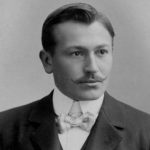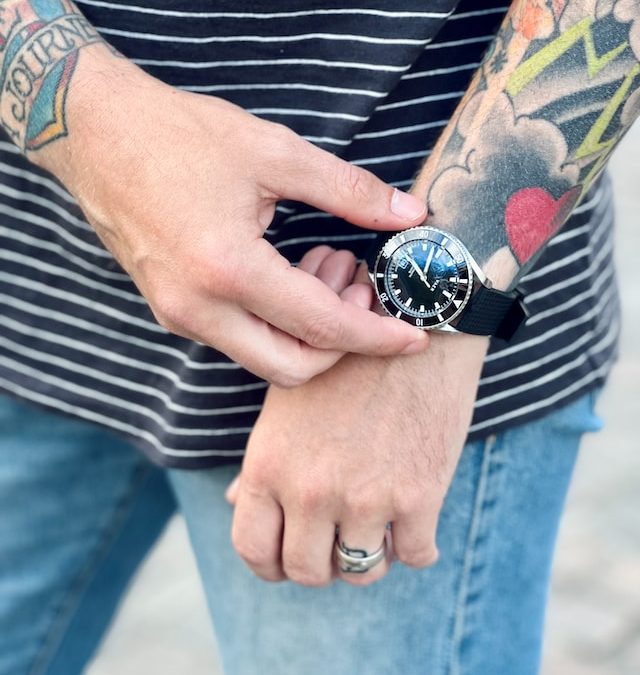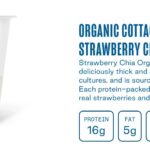Rolex – A Clever Name Based on HoROLogical and EXcellence
Who was Hans Wilsdorf?
When it comes to luxury watches, Rolex is a name that is synonymous with quality, precision, and craftsmanship. Founded in 1905 in London by Hans Wilsdorf and Alfred Davis, Rolex has been a leader in the watchmaking industry for over a century.

So why is it called Rolex?
The name “Rolex” is a combination of two words: “horological” (meaning “related to time”) and “excellence.” This name reflects the company’s commitment to creating watches that are accurate, beautiful, and of the highest quality.
Rolex’s success is a testament to the power of a strong brand identity, a commitment to excellence, and a willingness to innovate. By focusing on quality, building a solid brand, leveraging celebrity endorsements, embracing innovation, and creating a culture of excellence, Rolex has become one of the most iconic luxury brands in the world. And while its non-profit status and secret sales figures may seem unconventional, it’s clear that this business model has allowed Rolex to focus on what it does best: creating exceptional watches that stand the test of time.
But what sets Rolex apart from its competitors is its exceptional timepieces and its unique business model.
Most people don’t realize that Rolex is a non-profit organization whose sales and revenue are kept secret.
This means that Rolex does not have shareholders, and all profits are reinvested into the company to improve its products and services. But how did this business model come to be, and what can we learn from Rolex’s marketing strategies?
Five key lessons we can learn from their experiences.
Lesson 1: Focus on Quality and Precision
Rolex set out to create beautiful and highly accurate watches from the beginning. In 1910, Rolex became the first watchmaker to receive the Swiss Certificate of Chronometric Precision, a testament to the company’s dedication to accuracy and precision. This commitment to quality and precision has been a hallmark of Rolex’s brand identity ever since.
Lesson 2: Build a Strong Brand Identity
Rolex’s iconic crown logo is recognized worldwide as a symbol of luxury and quality. But it’s not just the logo that strengthens Rolex’s brand identity. The company has also intentionally created a sense of exclusivity and prestige around its products. By limiting the number of watches it produces each year and carefully controlling distribution, Rolex has created a sense of rarity and desirability, making its watches more valuable.
Lesson 3: Leverage Celebrity Endorsements
Rolex has a long history of partnering with celebrities and high-profile athletes to promote its watches. From Roger Federer to Tiger Woods, Rolex has chosen ambassadors who embody the brand’s values of excellence and precision. These partnerships have not only helped raise awareness of the brand but also helped create a sense of aspirational appeal among consumers. Rolex only does sponsorships and promotions with the creme de la creme.
Lesson 4: Embrace Innovation
While Rolex is known for its classic and timeless designs, it has also been at the forefront of watchmaking innovation. In 1926, Rolex introduced the world’s first waterproof watch, the Oyster. This breakthrough technology helped to establish Rolex as a leader in the industry and set the stage for future innovations like the Perpetual rotor and the Datejust.
Lesson 5: Create a Culture of Excellence
Finally, one of the most important lessons we can learn from Rolex is creating a culture of excellence. From the company’s founders to its current employees, Rolex has always been committed to excellence in everything it does. This commitment to quality and precision is evident in every company’s operations, from manufacturing processes to customer service.
The Psychology of Marketing Rolex Brand
Rolex is a brand that has mastered the art of marketing luxury products. Here are five lessons that marketers can learn from Rolex’s marketing strategy based on psychology:
Exclusivity and scarcity: Rolex creates an aura of exclusivity and scarcity around its products by limiting the production and distribution of its watches. The brand deliberately establishes a waiting list for its most popular models, which builds anticipation and makes customers feel privileged when they finally acquire a Rolex. By creating scarcity, Rolex enhances the perceived value of its products and generates a sense of exclusivity that appeals to luxury consumers. You can’t typically buy a Rolex in a dealer store. There is almost always a waiting list, and often customers wait six months for the model they want.
Heritage and tradition: Rolex has a rich history that it leverages to connect with customers emotionally. The brand’s heritage and custom create a timelessness and enduring quality that appeals to luxury consumers. By emphasizing the craftsmanship and precision that goes into making each watch, Rolex establishes a sense of pride and ownership for its customers.
Quality and durability: Rolex’s marketing emphasizes its products’ superior quality and durability. The brand’s watches are designed to last a lifetime, and customers are encouraged to pass them down as heirlooms. By emphasizing the longevity of its products, Rolex taps into a psychological need for permanence and stability, which is particularly relevant in uncertain times.
Brand identity: Rolex has a strong brand identity that is instantly recognizable. The brand’s logo and design elements are consistent across all marketing channels, creating a sense of customer familiarity and trust. By leveraging its brand identity, Rolex reinforces its position as a leader in luxury watches and ensures that its products stand out from the competition.
Emotional connection: Rolex understands that luxury products are not just about functionality but also an emotional connection. The brand’s marketing emphasizes the emotional benefits of owning a Rolex, such as status, achievement, and personal satisfaction. By tapping into customers’ desires for self-expression and social validation, Rolex creates a strong emotional connection that drives brand loyalty and repeat purchases.
Rolex’s marketing strategy leverages psychological themes such as exclusivity, heritage, quality, brand identity, and emotional connection to create a powerful brand that appeals to luxury consumers. By studying Rolex’s approach, marketers can learn valuable lessons about how to market luxury products effectively.
Building the Rolex brand has taken time.
You can set up a time to chat with me about your marketing challenges using my calendar. Email me jeffslater@themarketingsage.com Call me. 919 720 0995. The conversation is free, and we can explore if working together makes sense. Watch a short video about working with me.
Photo by Tim Wildsmith on Unsplash





